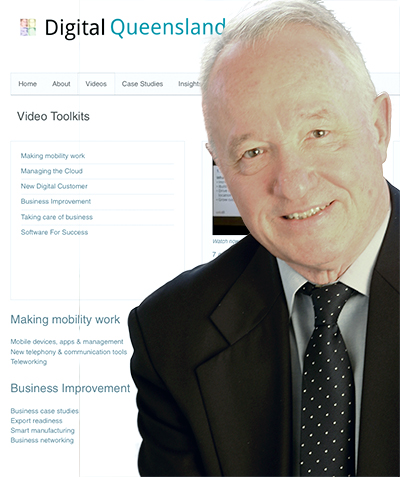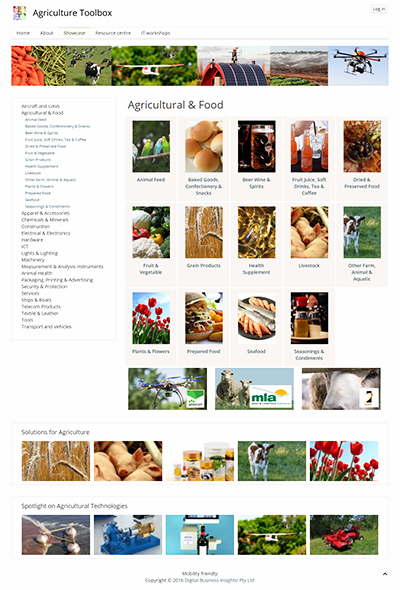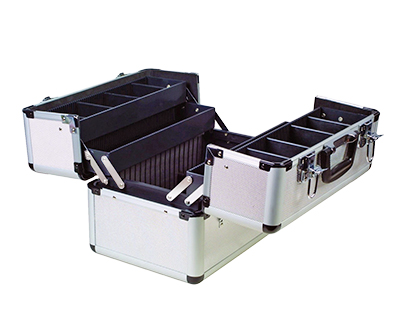Digital Business insights: The equation for success =1+1=3 (or even 11)
Digital Business insights by John Sheridan >>
JAMES KIRBY, wealth editor of The Australian raised some interesting points recently, under the heading 'The four big housing market lies'. It’s worth reading The Australian just for that commentary alone.
He points out that Australians are able to pay their mortgages each month because interest rates are so low. When rates move higher, as they will, there will be a problem. 
Most deposits are 20 percent, which makes saving for a deposit just about impossible, without help from mum and dad. If that help is available.
Nearly 40 percent of the market is in interest-only loans. They rely on price appreciation to make money. Any change in conditions – negative gearing, tax deductions, rising interest rates, China shutting the gate, drop in house prices – and the overall market will shudder, disrupting other parts of the economy.
Anecdotally, Chinese housing investment is a subject that is regularly and quietly discussed in offices, living rooms and at barbecues when the subject of who bought the house at the end of the street comes up…”a nice Chinese couple. They outbid everybody.”
And there will continue to be Chinese investment in Australian capital cities for as long as Chinese and Australian regulators allow it. Blocking the dreams of young Australians to own anything in the city.
Last week, the OECD pointed out the obvious again, stating that Australia risks a rout if house prices fall sharply, which will bring the rest of the economy down with it.
There are some signs that government is waking up to this impending mess, but mainly in mutterings from the backbenches on all sides of the house. As far as action is concerned…
Nothing. Ministers sitting in self imposed straitjackets.
There is a breaking point to anything and everything.
“The straw that broke the camel’s back”. We all know the concept.
At some stage, even a relatively small impact can have a massive effect.
The market is under strain. From many directions.
Chinese investors keep adding fuel to the equation above, driving up prices.
Strain.
Interest rates will go up this year. More strain.
Now let’s add a haystack of straws to the equation. See what the poor camel thinks of that.
Jobs disappearing because of digital technologies.
Enormous strain.
People need jobs to be able to pay mortgages. Household debt is higher than it has ever been. Wages growth is static.
Unemployment is 9.7% and underemployment is 8.2%. This set of figures is now destined to grow bigger.
Not in a sudden, dramatic tidal wave of change. But in a slow, steady, remorseless one job at a time, “boiling the frog” transformation.
Because the conditions that impact employment decisions are changing.
Stephen Hawking, Elon Musk and Bill Gates are not being narcissistic attention seekers, when they state very clearly that robots, automation, software and artificial intelligence are going to destroy jobs soon.
They are just being good citizens.
They are much richer, better networked and far better informed than most of us. They have nothing to gain from spreading wild rumours and dissent.
They just happen to have insights, perspectives and experience denied to most of us.
Oxford University pointed out years ago that 47% of jobs were likely to disappear in the next decade.
The uniformed (mainly politicians and economists) looked around, couldn’t see a tidal wave coming, and disagreed. Loudly. Based on “well it never happened before.”
Quite right. That’s why it’s called the digital revolution. With an emphasis on the word revolution.
Who do you believe?
The interesting thing about technology tools is that many of the impacts don’t arise at the invention of the tool eg when the fax machine was sold to the first business, but only when the adoption and use of the tool – the fax machine, became universal.
And the impact isn’t then about the fax machine, it is about the value delivered by all the connected fax machines and their ability to send and receive copy and images quickly, easily and universally.
The same with the internet. New value has arisen as the internet has grown and individuals have connected. Publishing, Search, Access to information. Collaboration. Social media.
But the real impact has been the resulting shift of power from the vendor – the provider of products and services and information to the customer. Customers now have instant access to information from multiple sources and the ability to compare, check and discuss that information with others.
This has disrupted politicians, columnists and pundits enormously. Because opinion can be fact checked instantly, and authenticity and honesty have gained new value. Even Trump can’t avoid that fact.
Many benefits and challenges of technology only arise once there is a critical mass of users. The critical mass creates a new condition, often shifting and transforming traditional power relationships as well as creating new possibilities.
We have seen this with the rise of online retailers like Amazon creating new retail relationships that ignore borders, high streets and tax officials. Or Uber disrupting taxi companies and AirBnB disrupting accommodation.
Uber relies on the universal adoption of mobile phones. Amazon and AirBnB rely on universal access to the internet.
These things we see and understand. And so far the impacts of technology have been largely positive. Phones, games, information, entertainment, shopping, office software, social media – all good.
What we don’t see or understand so clearly is the next set of connected technologies arriving in the marketplace.
When technologies first arrive the final impacts are not appreciated fully. Adoption is often slower than expected. Overhyped and exaggerated. But once critical mass is achieved adoption and use speeds up and the real impacts are revealed.
Robots. We all know about robots. We see them in films and factories. Rows of them lined up, doing specialised tasks, 24x7. Tireless, consistent, reliable.
Robots are now moving into new domains. Moving out of the factory into other environments. Mining. Defence. Agriculture. Healthcare. Warehousing. Transport. They are becoming multi-purpose. Adaptable. Configurable. Friendly.
Artificial intelligence. AI. We know that intelligent machines have competed and beaten humans in Chess and even Go. AI techniques are now being applied in speech recognition, driverless cars and writing articles. So we are already seeing real world applications in action. With more to come.
Smart systems. Enterprise management systems are maturing quickly, replacing legacy systems in government, academia and corporates eliminating administrative jobs like never before. Many full time workers have been shifted onto contracts, into part time and offered redundancy packages.
So the percentages for part time employment and underemployment (almost 18%) will grow, as big businesses, academia and governments finally get their systems in order.
And this isn’t happening in just one industry, it is happening across all industries and at practically the same time.
This is what Bill Gates, Elon Musk and Stephen Hawking can see from their lofty perches. And are warning governments about.
In retail and wholesale, in transport, in manufacturing, in hospitals, in universities, in defence, in agriculture, in restaurants and catering, in education, in healthcare, in professional services, in finance and insurance, in mining and energy.
Most of us now have direct experience of this happening in our families, with our friends, and in our networks and our workplaces.
And yes, some jobs are being created as most jobs are being destroyed, but nowhere near enough.
But the quality and value of the new jobs is variable.
There are some high value “Lexus and Mercedes” class jobs, but a lot more low value “pushchair, billycart and skateboard” class jobs on offer. At less pay, less security and with no future.
So throw the “jobs” hand grenade into the same economy as the “housing bubble” and it gets interesting to say the least.
And most people can now see this coming. Or feel it coming. Or suspect it is coming.
We need to remove the “spectacles of delusion” and take a good look at this issue.
Using 20-20 vision. No politics. No left and right. Just listen to what Gates, Musk and Hawking are trying to tell us.
To start with, we need to accept the real unemployment figures – see Roy Morgan for more on this issue.
You need to know where you are, before you can decide where you want to go next.
We can get out of this predicament we have sleepwalked into, but only if we work together.
The solution isn’t quick. There is no quick fix, magic wand. It requires a clear vision, coupled with consistent and persistent effort.
Which we are well placed to pursue.
We have to focus on our productive industries. Agriculture, creative industries, manufacturing, ICT, medtech, greentech, METS and tourism.
These are the industries that offer the possibility of high value, high wage jobs.
Add value through design, branding, licensing, promotion and advertising. Match productive industries with R&D from universities.
Connect businesses for collaborative action. Share successful case studies and projects across, within and between regions. Connect regions for collaborative action on jobs and regional growth.
Export. Showcase our value-added productive industries to the world. Target the 20 or so major overseas markets with our value-added products and services.
Keep doing the above.
Collaborate and act.
That is the equation for success.
*
John Sheridan is CEO of Digital Business insights, an organisation based in Brisbane, Australia, which focuses on helping businesses and communities adapt to, and flourish in, the new digital world. He is the author of Connecting the Dots and getting more out of the digital revolution. Digital Business insights has been researching and analysing the digital revolution for more than 15 years and has surveyed more than 50,000 businesses, conducting in-depth case study analysis on more than 350 organisations and digital entrepreneurs. Now DBi is turning that research into action through a series of digital business development platforms, the first of which launched in 2016, the Manufacturing Toolbox. DBi has now also launched a series of international online trade showcases, promoting Australian goods and services to specific countries and promoting use of those showcases in those countries. The first, just launched, is the Australia-Taiwan Trade Showcase. Coming soon are trade showcases for Japan, Hong Kong-China, Korea, Japan, Indonesia, Singapore and India. Australia's Regional Economic Development (RED) Toolbox has now been launched at http://theredtoolbox.org.
ends





